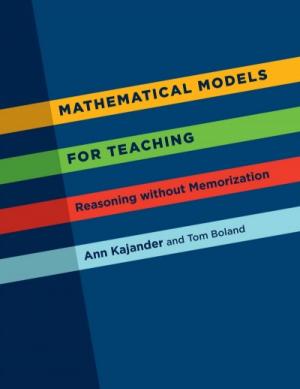
Mathematical Models for Teaching: Reasoning Without Memorization
Mathematical Models for Teaching is a practical guide for effective elementary math instruction aimed at improving the mathematical understanding and comfort of pre-service and in-service teachers. For years there has been a research-based movement away from old-style dependence on math textbooks, in favour of developing student understanding through mathematical and conceptual exploration and discovery. Currently approved math texts and the best teacher-support guides reflect this development. Reflecting perhaps their own formation in mathematics, many teachers remain more comfortable teaching math with a traditional textbook approach and may be somewhat uncomfortable with the conceptual demands of the math curriculum. It has been a challenge to find the necessary support for an exploration-and-discovery approach to mathematics. This book may be exactly what is needed.
Mathematical Models for Teaching explains clearly why exploration and conceptual discovery are beneficial for both teachers and students, with plenty of references to relevant academic research. Examples of models include diagrams, sketches, visual aids, mental images, math manipulatives, abstract constructs and computer simulation. The purpose of such models is to stimulate ways of thinking about a problem. To be clear, this is not a lesson book, but it is easy to see how the ideas are directly applicable to lessons. The prose explanations of models and concepts are amazingly clear. For instance, the chapter on introducing numbers discusses clearly and in sufficient detail the pedagogy of using math manipulatives. Overall, the book takes mathematical notions to their most basic level with a view to developing mathematical thinking, in the reasonable belief that teachers with a secure understanding of foundations will be better for it.
The concepts addressed in the book range from primary (e.g., addition and subtraction) to intermediate (e.g., integers, algebra, geometry), which makes it an appropriate resource for pre-service teachers who need such breadth. For in-service teachers, the book would be helpful for schoolwide or board-level professional development with a coach, or simply as an excellent resource for a teacher’s annual learning.
Robert Henderson is a recently retired member of the Elementary Teachers of Toronto Local.